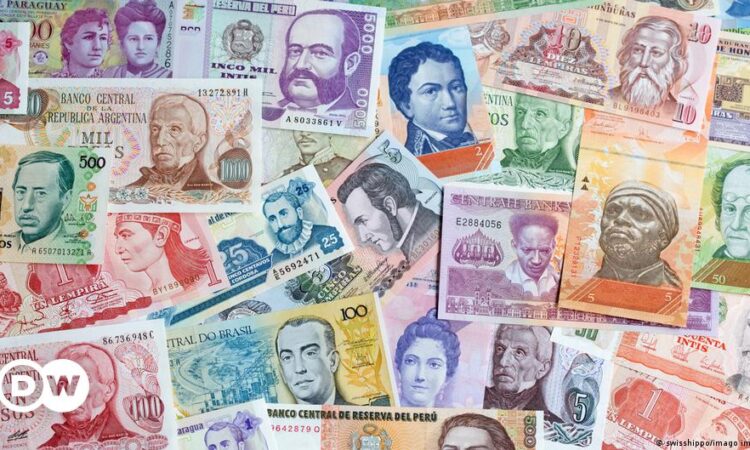
For Luiz Inacio Lula da Silva, a candidate in the forthcoming Brazilian presidential election, it’s a question of independence for the entire region. “If God wills, we will create a common currency for Latin America, because we shouldn’t be dependent on the dollar,” he said a few weeks ago.
It remains to be seen whether this was just an attempt to create an issue in the early stages of the election campaign or whether the former Brazilian president (2003-2011), who is currently leading the polls, is serious about this idea. Either way, it has sparked a debate. The Argentine business portal El Destape subsequently asked: “A single currency for all of Latin America — is that possible?”
A currency called ‘south’
The idea is not new. An original proponent is the Brazilian Fernando Haddad, former mayor of Sao Paulo and ex-presidential candidate of the left-wing Workers’ Party (PT), who lost the 2018 ballot to current incumbent Jair Bolsonaro. He recently brought up the idea again in a guest article for the newspaper Folha. He even suggested a name — sur, meaning south. The fact that Lula, as a political heavyweight in Latin America, took up the topic shows that it has what it takes to move people both emotionally and politically.
No easy way forward
The idea of a single currency is easy to formulate, but the path to creating it is complicated. Jacques D’Adesky from the Fluminense Federal University in Rio de Janeiro referred to the existing differences and historical rivalries, for example between neighboring Argentina and Brazil. “The formation of a single currency zone would initially require many negotiations between the future partners,” he told DW, saying such a process would take years.
Economist Leandro Dias from AkinTec bank in Sao Paulo wants to wait and see whether the idea survives the current election campaign. In principle, the Mercosur economic area has already contributed to the region working more closely together. However, “most countries would like to retain their sovereignty and economic independence,” Dias told DW.
Digital means of payment
A single Latin American currency, as Haddad envisions, aims to “improve trade and commercial exchanges in the countries of the region.” According to his proposal, it should be supported by a central bank as a digital currency. However, in order to take the first step in this direction, a public declaration of intent by several governments is required so that negotiations can begin.
Maduro backs single currency
Venezuela’s socialist president, Nicolas Maduro, whose country has been suffering from chronic inflation for years, also recently brought the idea of a single currency back into play. He suggested promoting the sucre, a means of payment used by the ALBA alliance of states, which is dominated by left-wing governments including Bolivia, Cuba and some smaller West Indies nations.
He believes using it as a regional digital means of payment could then replace the dollar. However, the sucre has not grown beyond its symbolic status, while confidence in Maduro’s economic policy competence is low.
Political dimension
The introduction of a uniform Latin American currency would also have a political dimension, similar to that of the euro in Europe. Latin America — or South America — would be viewed as a unified economic area from both the inside and the outside, and the region would move closer together economically and socially. The sur proposed by Haddad could, therefore, be a precursor to a political development that could eventually lead to a Latin American Union, a possible “United States of Latin America.”
Ramona Samuel contributed to this report from Rio de Janeiro.



